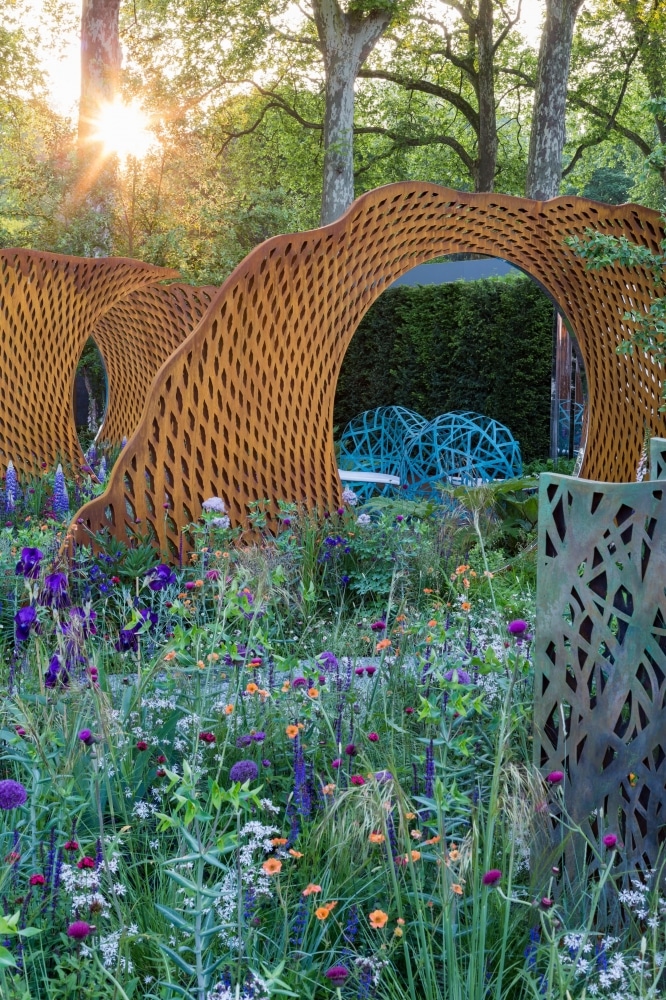May is the month of the globe’s most prestigious gardening event: the Royal Horticultural Society’s Chelsea Flower Show.
Attracting visitors from all over the world, it sets the horticultural agenda, not only in terms of innovative planting ideas and shining a spotlight on an exciting selection of flora and fauna species, but it also helps to showcase and kick-start lots of inspiring garden design trends.
Ahead of the event, which takes place within the grounds of the Royal Chelsea Hospital in London from Tuesday May 21 until Saturday May 25, I spoke to Simon Sutcliffe from How Green Nursery, a family-run business based in Hever.
The nursery specialises in producing outstanding perennials for the horticulture trade – and for 2019’s show they are growing different varieties for the Donkey Sanctuary garden.
“The garden we are growing for the Donkey Sanctuary garden is called Donkeys Matter,” says Simon. “It’s a Mediterranean-style garden in which we have included varieties such as Nepeta Purrsian Blue, which is a cracking new catmint. It’s a good, robust variety that doesn’t flop and boasts dark flower stems.
“Another flower we are growing for it is Iris Langport Wren, a brooding deep purple offering, which has been gaining some interest.”
He added: “Other top planting tips I’d suggest for achieving a typical Chelsea ‘look’ are a good smattering of tough but reliable and aromatic unbellifers such as Pimpinella Rosea, Chearophyllum Roseum, Cenolophium Denudatum and of course Anthriscus Ravenswing.
“Plant these amongst a structured border using topiary shapes and you will have a small piece of Chelsea at home!”
THE LEMON TREE TRUST GARDEN DESIGNED BY TOM MASSEY. IMAGE: RHS/NEIL HEPWORTH
Border Control
Good plants for a predominantly blue border:
Plant native bluebells (Hyacinthoides Non-scripta) in the green now or as bulbs in autumn
Bulb Grape Hyacinth (Muscari Armeniacum) thrives on neglect in all but soggy conditions. Can be invasive so choose the less rampant ‘Valerie Finnis’
Climber Robust Clematis Alpina ‘Frances Rivis’ copes with windy spots, blooming through May. Its seed heads are charmingly fluffy
Ground-cover Vinca Minor ‘La Grave’ is covered with larger-than-usual lavender-blue flowers until September. Less invasive than some periwinkles
Shade-lover, clump-forming Brunnera Macrophylla tolerates dry soil once established. Silvery-leaved ‘Jack Frost’ really brightens a dark spot
Must do jobs for May
1 Feed bare soil between plants with general-purpose fertiliser and dose acid-loving rhododendrons and camellias with sequestered iron. Blackberries, loganberries and blackcurrants need a high-nitrogen feed
2 Sow peas, broad beans, brassicas, leeks, root veg, spinach, chicory, Swiss chard, salad and hardy herbs. Start tender veg and half-hardy annuals – cosmos, nicotiana, snapdragons – under cover
3 Plant Jerusalem artichokes and asparagus crowns.
4 Fill pots with glamorous summer-flowering bulbs and pinch-out fuchsia, sweet peas and pelargoniums to encourage bushiness and heavier flowering.
5 Deadhead your spring flowering bulbs but do not cut off the green foliage yet! These green leaves continue to grow for a few weeks, and provide the bulb with food for flowering next year
6 Mowing and lawn care has started with the warmer weather but be careful not to scalp the lawn by mowing it on a higher setting
7 Water early and late to get the most out of your water; recycle water when possible
8 Divide hostas as they come into growth.








